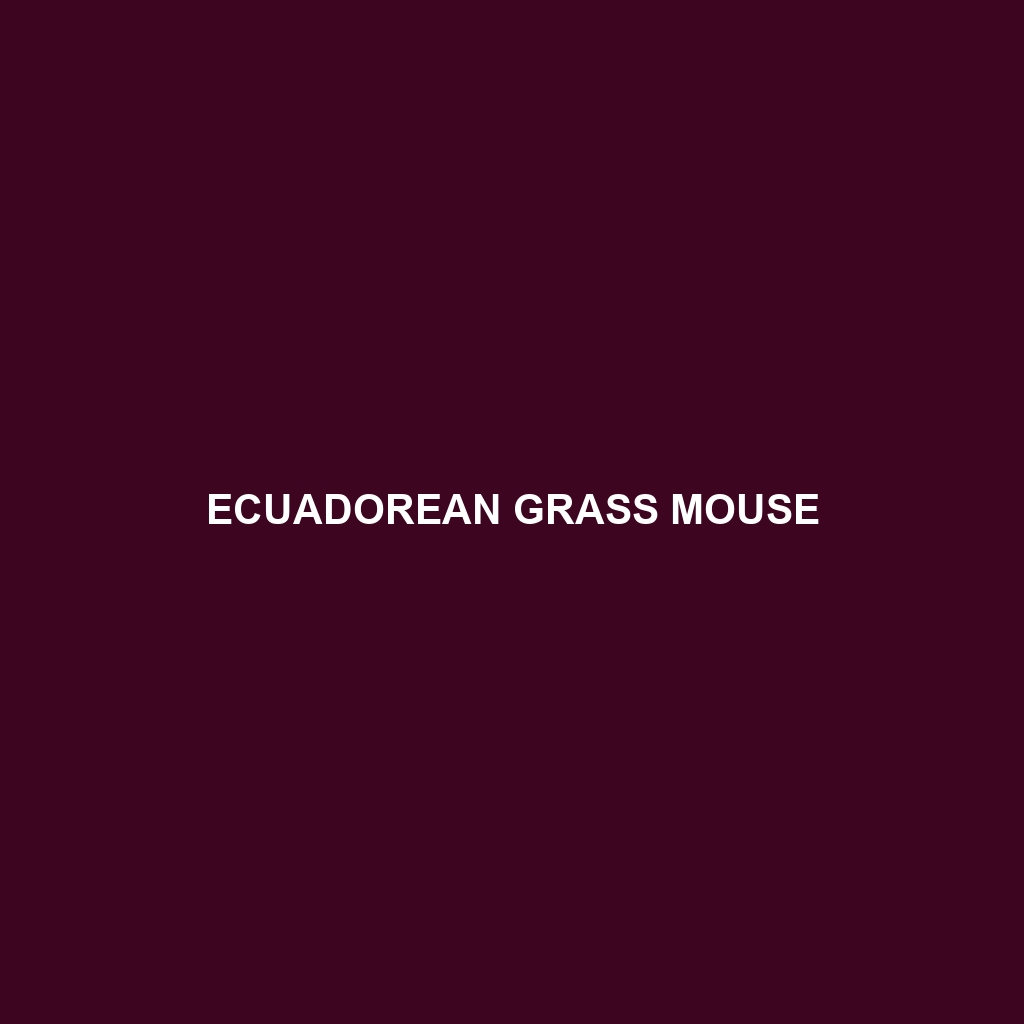Ecuadorean Grass Mouse
Common Name: Ecuadorean Grass Mouse
Scientific Name: Akodon mollis
Habitat
The Ecuadorean Grass Mouse is primarily found in the temperate grasslands and montane ecosystems of Ecuador. This species thrives in lowland areas at altitudes ranging from 1,000 to 4,000 meters above sea level. It prefers habitats with dense vegetation, offering ample shelter and foraging opportunities. Common locations include grassy fields, shrublands, and the edges of forests, contributing to its widespread distribution across the Andean region.
Physical Characteristics
Ecuadorean Grass Mice are small rodents, typically measuring about 10 to 12 centimeters in body length, with a tail that can extend an additional 6 to 8 centimeters. Their fur is predominantly light brown or gray, with a lighter underside, providing excellent camouflage against the grass and soil. One distinctive feature of the Ecuadorean Grass Mouse is its elongated snout and large, rounded ears, which aid in hearing predators while foraging.
Behavior
These mice are primarily nocturnal and exhibit crepuscular activity patterns, being most active during dusk and dawn. Ecuadorean Grass Mice are known for their burrowing behavior, creating extensive tunnel systems that serve as nests and food storage areas. They display inquisitive behavior and often engage in playful interactions with one another, which can involve chasing and grooming.
Diet
Ecuadorean Grass Mice are herbivorous, with a diet primarily consisting of seeds, grains, and various types of vegetation. They favor soft grasses and flowering plants common to their habitat. Their feeding habits contribute to seed dispersion, playing a crucial role in the ecological health of their environment as they consume and travel with seeds throughout their range.
Reproduction
The Ecuadorean Grass Mouse breeds throughout the year, with peaks during the wet season, generally from October to February. Females typically give birth to litters of 3 to 6 offspring after a gestation period of about 25 days. The young are born blind and hairless, relying on their mother for nourishment and shelter until they are weaned around three weeks of age. Parental care is strong, with mothers often seen grooming and protecting their young intensely.
Conservation Status
Currently, the Ecuadorean Grass Mouse is listed as “Least Concern” by the IUCN, indicating that while it faces threats from habitat loss due to agricultural expansion and urbanization, it maintains a stable population in several protected areas. Conservation efforts focus on habitat preservation and managing human-wildlife interactions to ensure this species remains thriving.
Interesting Facts
– Ecuadorean Grass Mice have been observed engaging in communal nesting behaviors, which can enhance survival through predator avoidance.
– Their presence is indicative of a healthy ecosystem, as they serve as prey for various predators, including birds of prey and small mammals.
Role in Ecosystem
The Ecuadorean Grass Mouse plays a vital role in its ecosystem as a seed disperser, helping to maintain the plant community structure. They serve as an essential food source for predators, contributing to the energy flow within their habitats. By aerating the soil through their burrowing activities, they also promote nutrient cycling and soil health, making them a keystone species in their native range.
